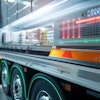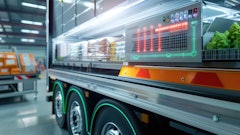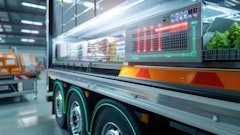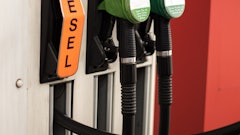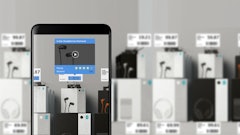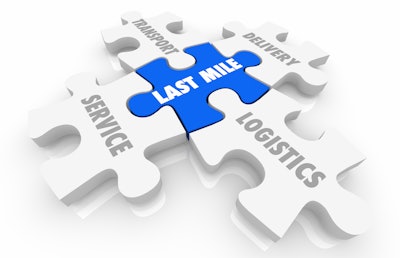
The influx in cargo theft, cybersecurity concerns and ever-changing industry regulations continue to threaten the safety and security of tomorrow’s supply chains.
But, when it comes to the State of the Supply Chain, the implementation of technology mixed with the ability to be flexible, nimble and versatile will enable the logistics world to pivot accordingly.
Marina Mayer, editor-in-chief of Food Logistics and Supply & Demand Chain Executive, talks exclusively with Ryan Leigh, CTO of Bringg, details why the last mile remains to be one of the biggest challenges for clients.
CLICK HERE to read the article in full.
Food Logistics: From your perspective, what are considered the Top 5 trends to watch in 2024, and why?
Ryan Leigh: Businesses will continue to seek savings and efficiencies wherever they can to try and make transportation more profitable, and this includes finding smart ways of introducing AI to better understand all of the data they’ve been generating and collecting over the years.
The last mile is one of the biggest challenges for our clients. While many won’t be ready to implement AI-based solutions as soon as January 2024, the ambition for most is to move towards more efficient use of resources and an overall better customer experience. At some point all businesses meet a trade-off; choosing between continuing to delight customers or cutting costs. AI provides more options to explore before meeting that trade-off point. It can help make otherwise complex operations a lot more lean and efficient while maintaining excellent customer experience. This will be a big trend for those on the mature end of the scale operating in the last mile in 2024.
Key to balancing customer experience with cost is data. Not only crucial to drive AI functions, customer data is the fuel for true optimization, empowering businesses to make crucial decisions around delivery prices and offerings based on customer loyalty and lifetime value to create more efficient and profitable strategies. This will become increasingly important to grocers of all sizes.
Finally, I think we’ll see more consolidation. There are a lot of companies out there who are struggling to get the right side of the profitability challenge, in all spaces, so there has to be consolidation to achieve the scale needed to be profitable. However, this is likely to introduce risks for the supply chain.
Food Logistics: Can you describe some of the challenges impacting many of today’s supply chains?
Leigh: There’s been a lot of focus lately on resilience or the risk around having a single point of failure within the chain. That doesn’t necessarily mean something big like the Suez Canal, it could be as simple as relying on one carrier for all of your deliveries. There are many risks in a single-provider approach, from consolidation to labor shortages to pricing and service level issues.
This year has also been the year of profitability (or the lack of it). It’s hard to make last-mile operations profitable and the days of growth at any cost are gone. Surging labor and fuel costs push additional pressure on the optimal use of resources, which is especially challenging for businesses like groceries where already thin margins are being depleted by the cost of delivery.
The final layer in the profitability equation is customer expectations, coming back to the need to be both efficient and create an amazing customer experience. At some point you have to choose one or the other. Will grocers and marketplaces continue to fight over speed and convenience or will sustainability finally take precedence? Those businesses selling to consumers will also have to choose whether to meet consumer demands (to win more business and grow) or give up ground to potential competitors in pursuit of a more profitable service level.
Food Logistics: Can you describe the State of Transportation. How factors such as union strikes, driver shortage, etc. will affect the State of Transportation in 2024?
Leigh: There are obvious lessons to be learned from the UPS and the Teamsters dispute earlier this year. A lot of businesses now understand the need to diversify and manage their risk, and that trend will definitely continue into 2024. We’ve seen a big demand for multi-carrier management technology over the past few years; where previously the focus of most projects was on speed, now we see attention shift to capacity planning, quicker onboarding of new carriers, and the mitigation of risk to avoid missing out on profitable consumer revenue.
Food Logistics: In your own words, please can you describe the State of E-Commerce, and how B2B/B2C channels in cold chain have thrived/declined since the onset of COVID?
Leigh: Following the initial rush for technology solutions to cope with consumer demands during COVID, there has been a general slowdown that reflects lower consumer confidence and spending, combined with macroeconomic conditions that were not favorable to long-term planning. The result? A much lower tolerance for risk, increased demand for proof of value before committing to spend, and businesses operating in a much more savvy way to avoid making expensive, long-term commitments to big transformation projects. This means tech companies such as ours must adapt to meet the changing needs of their customers, offering more flexible solutions.
Food Logistics: Describe the State of Software and Technology, and how AI, robotics and more are shaping the future of the cold food chain.
Leigh: We’ve reached the point where last-mile technology products are – for the most part – offering very similar things. Route optimization, analytics, driver app, live tracking and customer experience are all table stakes. The next iteration of technology will take the complexity of a multi-mode, multi-channel network and internalize it, making decisions using AI and other technologies that will optimize spend and maximize outcomes. This means dynamically choosing between modes and channels to cope with consumer demand and flex up or down the capacity of the network. The best tools are starting to take entire batches of daily demand and optimize across channels to plan and execute tasks while still respecting the consumer promise. This allows retailers, grocers, and carriers to focus on their own brand differentiation while still maximizing the bang for their buck in transport spend.
Food Logistics: Describe the State of Sustainability, and what’s in store for supply chains come 2024 with certain ESG regulations coming down the pipeline.
Leigh: The main focus for retailers, including grocers, is finding a reliable way to measure carbon emissions. Visibility is the first stop on the route to reduction, and in the last mile this could take several forms. Route optimization is a great first step, enabling retail businesses to reduce their carbon footprint on a delivery-by-delivery basis and empowering quick results. Of course, green vehicles – such as bikes – can be used in city centers. However, fleet electrification for longer distances will feel like a bigger commitment, requiring a huge investment made over time.
Food Logistics: What’s in store come 2024?
Leigh: Delivering an enriched customer experience and retaining loyalty are top priorities for many of our customers, especially in complex sectors such as grocery and big and bulky (white glove delivery). Investment in R&D and product innovation will be key to empower companies to effectively scale (and rapidly advance) their last-mile delivery operations while enhancing the customer experience.
Collaboration is also crucial; technology vendors, expert consultancies and carriers all needed to ensure an efficient and successful delivery ecosystem that can adopt to ever-changing demands in the industry.
CLICK HERE to read the article in full.


